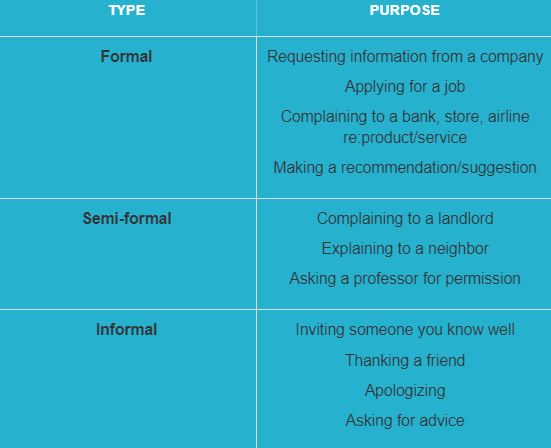This article will elaborate on General Writing Task 1. As you know, the IELTS test has two modules, General and Academic, in which the writing parts of these two modules are different. In General Writing Task 1, you have about 20 minutes to write a letter or email. How should this 150-word letter be written, and what techniques should we use to get the examiner’s opinion and a high score? In the following, we will explain these points.

1. Types of letters in General Writing Task 1
First, we need to know how many letters there are and how we should write them. In General Writing Task 1, you are asked to put yourself in the shoes of an imaginary person with the conditions mentioned in the question and write a letter about your conditions. These conditions may be favorable, such as writing a letter asking friends and colleagues to attend special events. Sometimes you will be asked to write a letter about adverse circumstances such as resigning from your current job.
Depending on the type of question and the circumstances in which you find yourself, you should make the right choice to write your letter in a formal, informal, friendly, or semi-formal tone. If you do not understand the question correctly and use the wrong tone to write the letter, you will lose the score in this section. You need to explain all the terms correctly and use words and phrases relevant and related to each other. The types of tones you should use to write a letter are divided into three sections, each of them will be briefly explained:
– Formal letter
Should usually write Formal letters to someone you do not know or have not met. Your tone should be completely formal in these letters, and you should not use acronyms.
– Semi-formal letter
In semi-formal letters, you write to someone you may not have seen but know. The tone of speech in semi-formal letters is as polite but cordial as formal letters. In these letters, avoid abbreviated words and use the person’s name in question.
– Informal letter
Unofficial and friendly letters to people you know and address by a nickname. In informal letters, you should use a friendly and sincere tone. The use of abbreviated words and informal terms is widespread, and there is no problem.
2. General Writing Task 1 letter structure
The letter you write in Task 1 of General Writing contains several main sections that you must follow.
The first part should start with writing the name or address of the person to whom you write the letter. Then explain your purpose of writing the letter to the audience in 2 to 3 sentences. In 5 to 6 sentences, in the main paragraph, fully explain the main issue you wrote the letter. In the next paragraph, describe your wishes, and in the third paragraph, try to have a suitable ending for the letter. Finally, end the letter with respect to the person in question. Try to follow these tips to have a complete and flawless letter.
3. Letter planning and design
By reading the letter, you should know its purpose and why you are writing this letter. Your approximate time for Task 1 of General writing is 20 minutes. Divide these 20 minutes to get the best results and write a good letter without the stress of running out of time. It is best to spend at least 3 to 5 minutes planning and designing (brainstorming). At this time, determine how you want to describe the letter, what you want to write, and how your paragraphing will be. Then start writing the letter and take about 10 to 13 minutes to write the generals. Do not forget to take the last 2 to 3 minutes to read and check the grammar, spelling, and lettering mistakes. Also, note that to avoid wasting time, avoid marginalization and focus all your attention only on the letter.

Conclusion
Task 1 of General writing accounts for about 33% of the scores in the writing department. So be sure to take the time for this part and study and practice the examples of previous tests so that you can succeed. Do not forget the points mentioned in the article and try to write an effective letter by choosing the right beginning and ending, the tone that fits the letter, and observing the structure of the paragraphs to get the desired score from the examiner.

